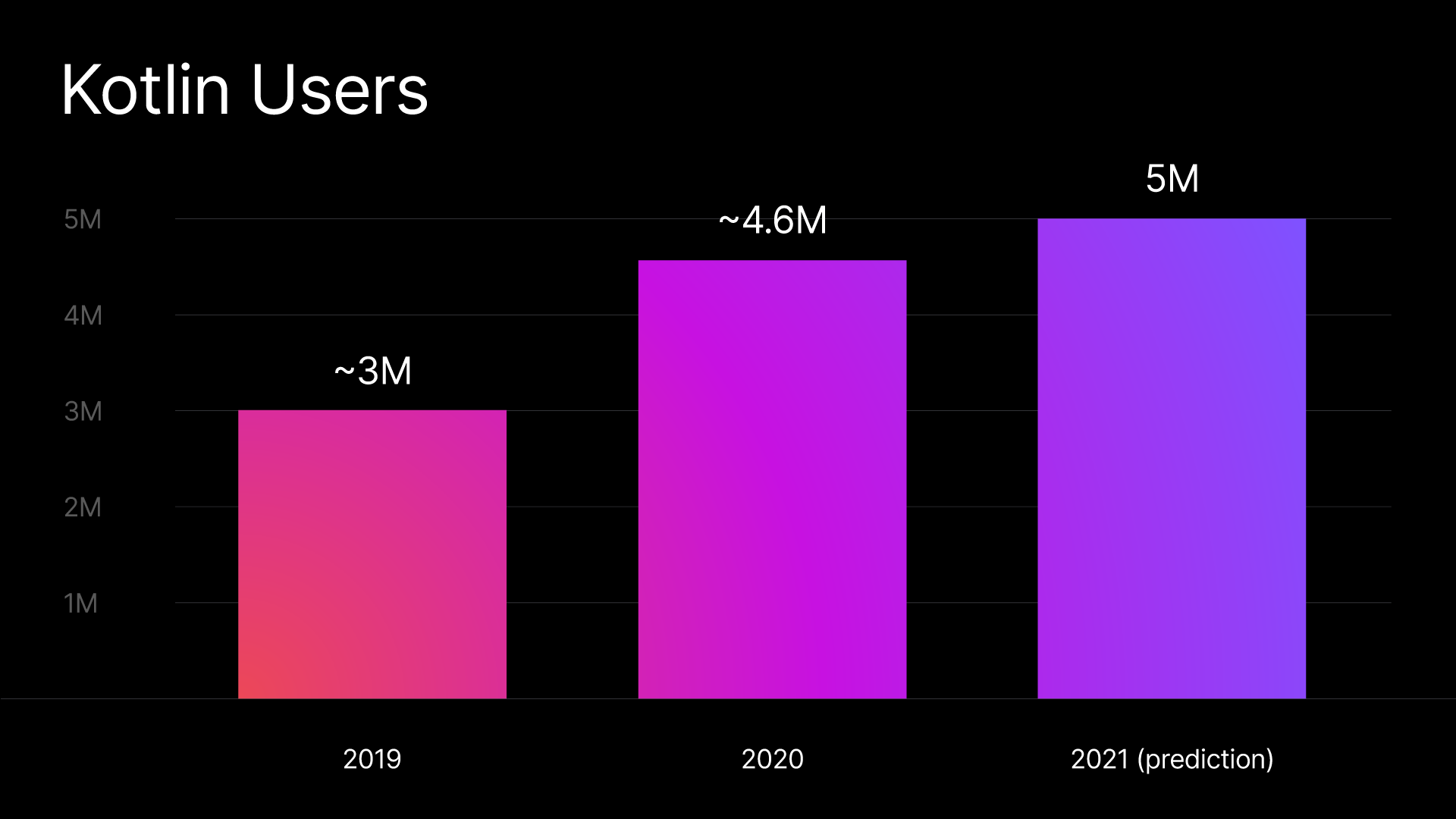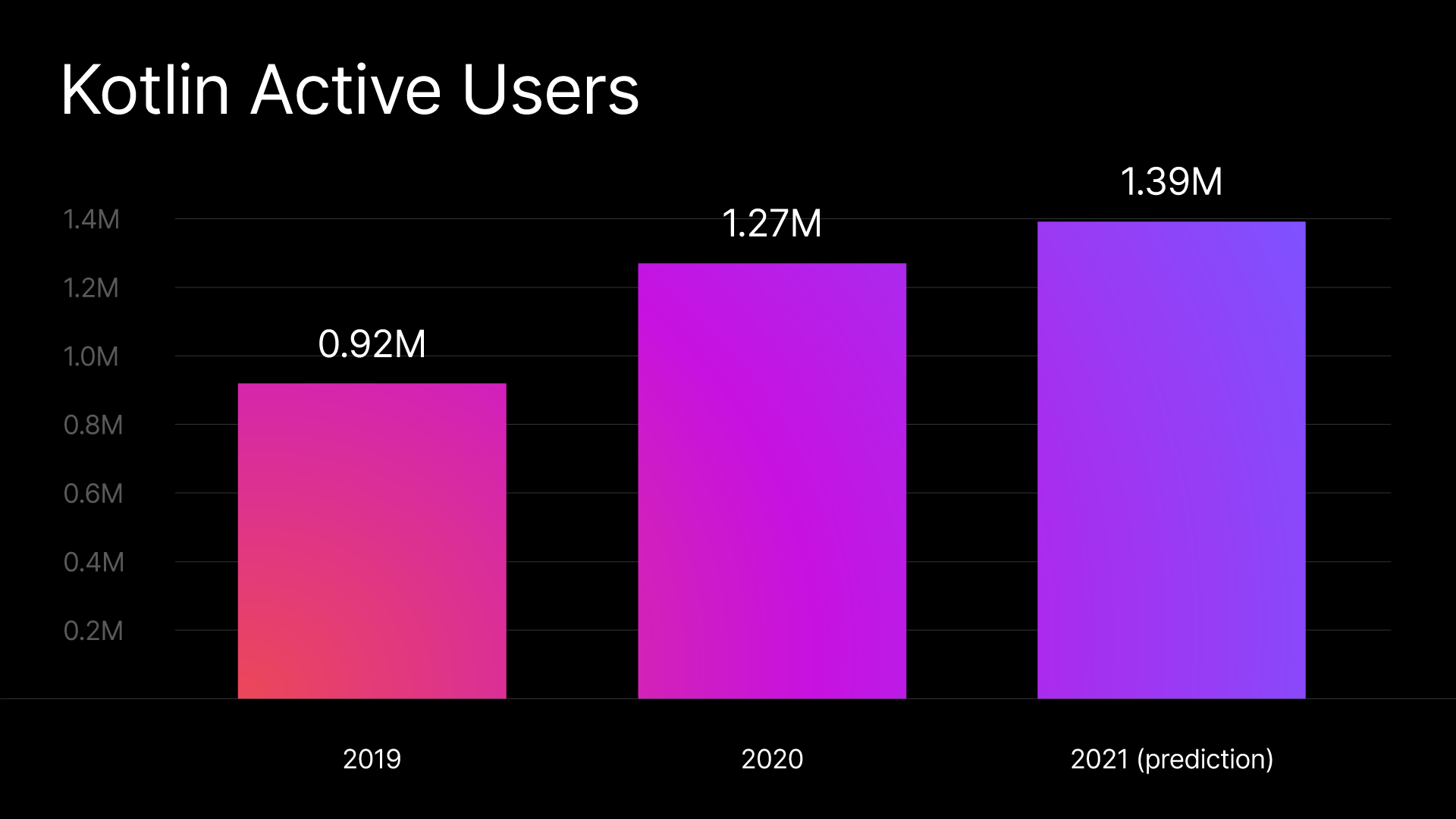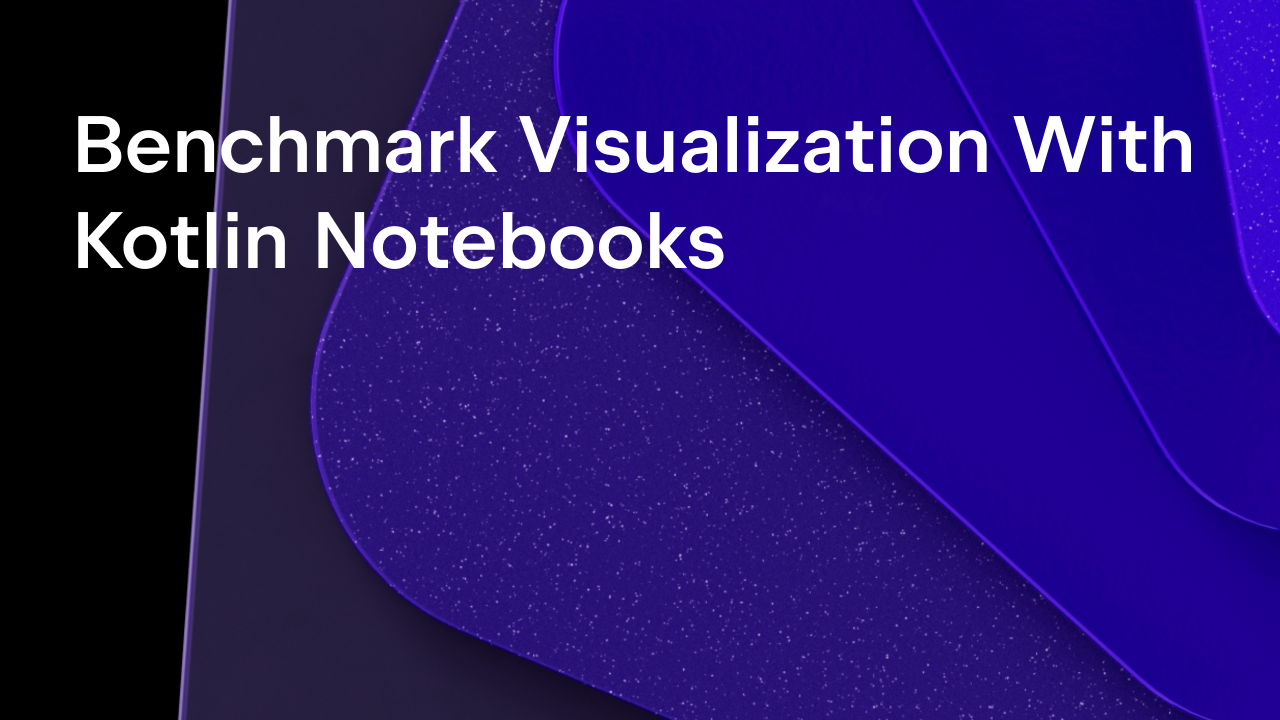Kotlin
A concise multiplatform language developed by JetBrains
The Actual Number of Kotlin Developers, or Who Our Active Users Are
In various presentations and keynotes, we’ve told you about how the number of Kotlin developers has changed. We’ve finally decided to explain how we calculate these figures.
But first, let’s start with some terminology, so it is clear who we are talking about:
- Developers – everybody who used Kotlin at least once within a given period.
- Active developers – developers who edited Kotlin code in both the current and previous periods. If we’re talking about active monthly users, we mean people who edited code both this month and last month.
In the last 12 months, we have had 4.86 million Kotlin developers globally. Of these users, 1.32 million were active developers in at least one month.


The average number of active developers per month in 2021 is 373,000.
Want to know more about Kotlin? Join us for the Kotlin 2021 Premier Online Event on October 19
How do we get these figures?
We collect this data from IntelliJ IDEA and the Kotlin Plugin, as well as from Android Studio. Basic usage data (date, IDE, OS) is gathered from all developers without a strict firewall, while in-depth data (data about targets, for example) is gathered only from users who opted-in and agreed to share their data with us.
Collecting and analyzing feature usage statistics helps us greatly in Kotlin development. It gives us a picture of the most and least used actions, which allows us to identify the most important areas for us to focus on. We don’t get any details about your code or project, as the statistics are anonymous and don’t contain any sensitive data. To make our calculations more accurate, you can help us collect more real usage data by opting-in to send us anonymous statistics from your project.

Tick the Send usage statistics checkbox to allow JetBrains to collect statistics on the features and actions you use most frequently when working with IntelliJ IDEA.
Different ways to count Kotlin developers
To make sure our data is correct, we look at programming indexes. We also employ a couple different research methods:
- Internal research conducted by the JetBrains Market Research & Analytics (MR&A) team
- The State of Developer Ecosystem, conducted by the JetBrains MR&A Team
Internal research
In addition to actual usage data, we regularly rely on internal studies conducted by the JetBrains MR&A team. We build our model based on normalized and weighted publicly available data on the number of professional developers (developers and freelancers who are fully employed, self-employed, or employed part-time) and several economic features:
- Labor force, total
- ICT service exports (BoP, current US$)
- Researchers in R&D (per million people)
- Marketing region
That’s how we know the number of professional developers globally and by country. We also compare this data with the numbers from SlashData, Stack Overflow, Evans Data, and GitHub to ensure it is correct.
Next, we take this data and measure the usage of a language or a framework. We know the general amount and the share, and that allows us to estimate professional audience size. For Kotlin, it is 1–1.9 million developers.
The State of Developer Ecosystem
This is an annual survey conducted by the JetBrains MR&A team. This report is based on the input of 31,743 developers from 183 countries and regions. You can find the detailed methodology and the results of the latest survey here. Based on the results and the estimation of the professional developer population, about 2 million professionals have used Kotlin at least once in 2021. Among them, roughly 1 million professional developers use Kotlin as one of their 3 primary languages.
Conclusion
We believe that the number of active Kotlin developers is one of the best indicators of Kotlin’s health, and it shows us whether we are on the right track or if we need to reconsider anything. It shows both how actively people are adopting Kotlin and how likely they are to keep using it.
To help us see the whole picture more accurately, we’d really appreciate it if you would start sharing your anonymous data with us. This would allow us to develop the language in the directions that will best serve your needs.
Subscribe to Kotlin Blog updates









